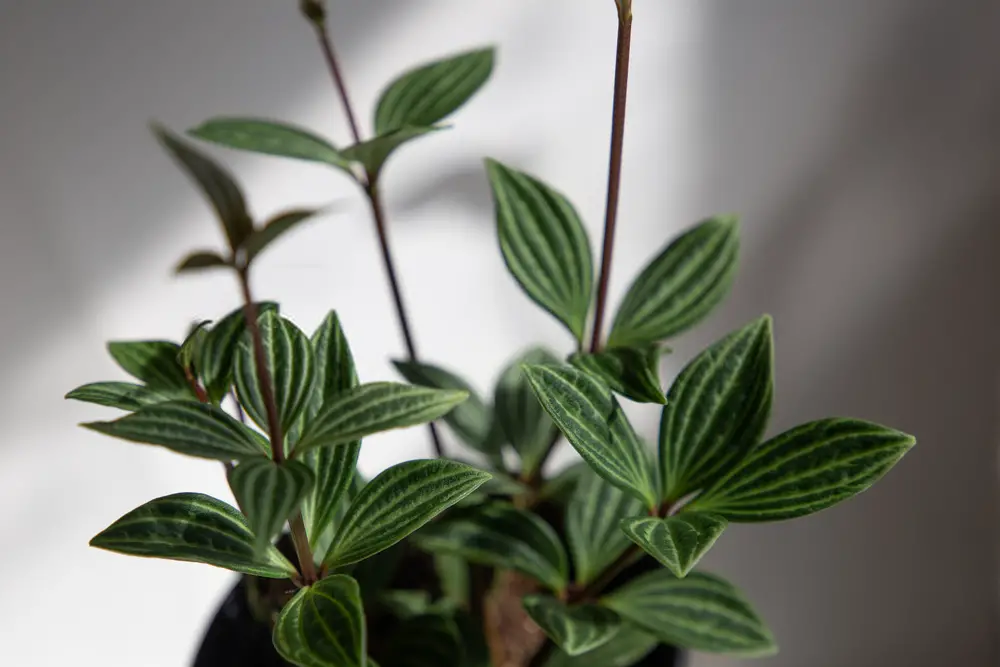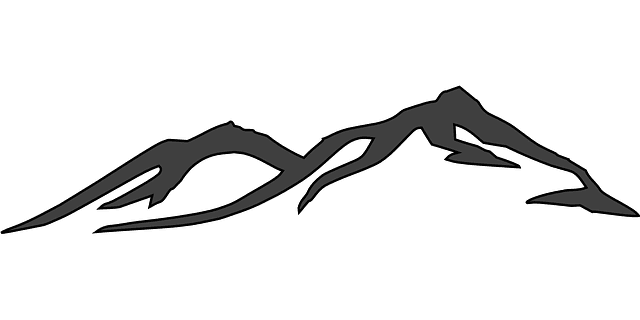
“Peperomia Angulata” also known as Beetle Peperomia, Himalaya Peperomia, Peperomia Quadrangularis. It is a hanging plant belonging to the extensive family of Peperomias, “Piperaceae”. Most Peperomias are native to tropical or subtropical areas of South and Central America. Many of them live in areas near the Amazon River with warm temperatures and in shady situations. However the Peperomia Angulata is originally from the tropical regions of South America. It still grows there, but today this plant is available worldwide as a houseplant.
Peperomia Angulata is a popular and very strong houseplant perfectly suited for growing as indoor plants. You can keep it small for the table, but also let it grow into a nice hanging plant. This plant is also very suitable for terrariums. In addition, this plant is of course so popular because of its leaves.
Compact and highly branched plant with long hanging stems, the stems are thin and cylindrical, reddish brown. The leaves are small, about two and a half centimeters long, they are oval and thick with smooth edges and pointed ends, they are intense green in color and have light green longitudinal stripes. The leaves grow on both sides of the stem, leaving a space between the groups of leaves on bare stems. The flowers are small in the form of small yellow or greenish spadix.
Pitch and light:
In nature, the Peperomia grows in the shade of the taller trees. Situation of semi-shade or light shade, avoid the direct rays of the sun that can cause burns in its vegetation. This means a location where the plant is in the light, but does not receive direct sunlight.
Direct sunlight could be in the morning or evening. Then the sun is not as strong as in the afternoon.
If you notice the leaves are starting to shrivel, then you have to get it out of the sun again. In a very shady location, its leaves will have less color and the plants will not develop well. It is frequently grown as an indoor plant, in climates with mild winter temperatures it can be grown outdoors.
You should use a loose and spongy substrate that drains perfectly. They do not need a lot of fertilizer, but you can add a little liquid fertilizer for green plants monthly in spring if the plants grow little.
Watering:

It needs regular but not excessive watering, a weekly watering is usually enough if you grow it as an indoor plant. This plant has thicker leaves than the average houseplant. The leaves are succulent, a bit like what succulents have. Like succulents, Peperomia Angulata can store water in the leaves. This is a characteristic of many species within this plant family, such as the Peperomia Hope .
You can also let the soil dry out slightly before watering again. In the summer it is warmer and the plant is in the growth phase. You will therefore water more often than in winter.
Avoid soaking the substrate and make sure that the rest of the standing water does not remain in contact with the base of the pot, this way it will prevent its roots from rotting and the plant from deteriorating.
Humidity:
Another care requirement where Peperomia Angulata differs from succulents is the humidity. A succulent plant thrives in dry air, but the Angulata prefers high humidity. Unfortunately, the humidity in our homes is often too low for this plant.
Give them a hand by increasing the humidity. You can do this by misting the plant a few times a week with the plant sprayer. Preferably do this in the morning, then the plant has the whole day to dry up.
Pruning:

You do not need to prune this plant to keep it healthy. You can, however, trim the plant if you think it is getting too big or getting out of shape. Trim the tendrils you want shorter with clean scissors. You can take the cut pieces and let them grow into a new plant.
Temperature:
Due to its tropical origin, Peperomia Angulata needs warm temperatures to develop properly, try to keep it between twelve and twenty-five degrees, if the temperatures are lower the plant suffers. In climates with cold winters it is recommended to grow it as an indoor plant or in greenhouses. They rot easily if they remain wet especially in winter with low temperatures.
It easily reproduces by terminal stem cuttings that contain several growth nodes, which you can plant them in spring, removing the lower leaves place the ends of the cuttings in a loose and spongy soil, previously soaked in a rooting hormone. In a few weeks the cuttings will have developed roots. Some months later when the little plants have developed enough roots and new shoots they will be ready to be transplanted. They can also be multiplied by seeds or division of bushes.
Nutrition:
In the months from early spring to the end of autumn, the plant is in the growth phase. Then the need for fertilizer is great. Give a little houseplant fertilizer every month during this period. Dose the amount according to the instructions on the package.
Peperomia Angulata in bloom:
If you handle the care properly, Peperomia Angulata can produce flowers. Usually this happens in late spring or early summer. If your plant does not produce flowers, but grows well, there is still no need to worry. Not every houseplant will flower every year.
The flower is different than you would expect. They are upright threads that contain the pollen.
Peperomia Angulata is a low maintenance plant and very easy to grow, it is quite resistant to insect pests and diseases typical of indoor plants. Its main enemy is excessive water and inadequate drainage. Insufficient lighting can also weaken the plant.
Frequently Asked Questions
Why my Peperomia Angulata leaves are falling out?
Is your plant losing leaves? This usually has to do with the amount of water. Too much or too little, both extremes are harmful to the plant. The reaction to that is to drop the leaf. Read at the top of this page about the right way and amount of watering.
Is Peperomia Angulata Toxic?
Most sources state that this plant is not poisonous. However, there are also a number of sources that indicate that this plant is slightly poisonous. It is therefore important not to take any risks.
If you have small children, cats or dogs in the house, it is therefore better to keep this plant away from them. By the way, the Peperomia Angulata is also beautiful as a hanging plant. Hang it high and keep it away from children and pets!
Also Read: Alocasia Sinuata ‘Quilted Dreams’ Ultimate Care Guide
